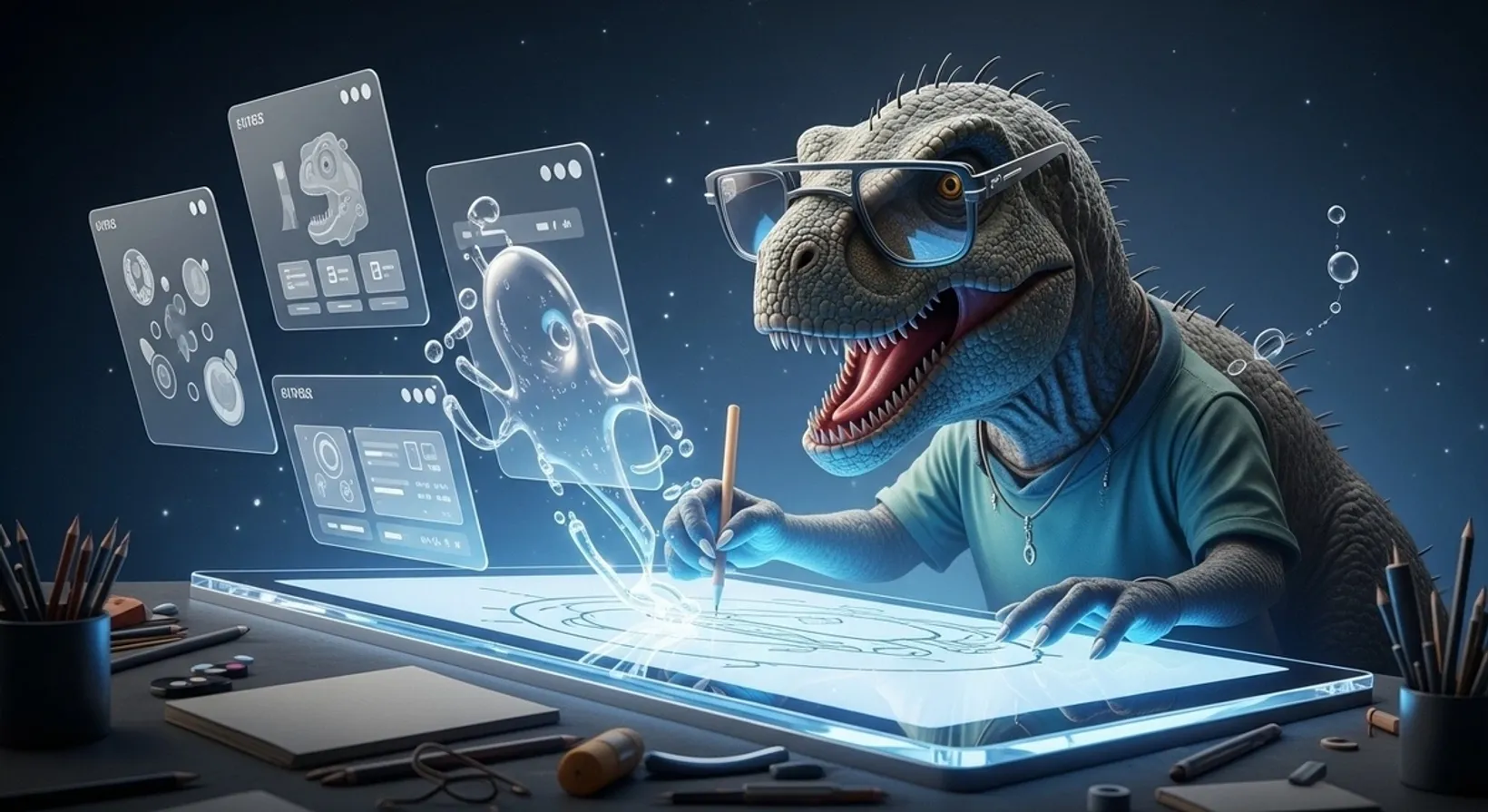Apple’s new design system, Liquid Glass, is a sleek new look but also a bold statement about the future of interactive interfaces.
At Rapptr Labs, where we build next-generation digital experiences, we're always watching for the next big evolution in UI. Liquid Glass represents a major leap forward, one that’s deeply inspired by the immersive design principles of visionOS.
In this post, we break down what makes Liquid Glass unique, why it matters, and what product teams can take away from Apple’s approach to designing digital futures.
What Is Liquid Glass?
Liquid Glass is Apple’s newest digital material, first introduced in visionOS and now extending its influence across iOS, iPadOS, and macOS. It follows in the footsteps of iconic design shifts like Aqua (macOS), the flat design of iOS 7, and now, the spatial and layered UI of Apple’s spatial computing environments.
Liquid Glass is, of course, incredibly aesthetic but also is a living surface, a responsive material that bends, reflects, and adapts to light, movement, and touch in real time.
This evolution is key to visionOS and is now being unified across all Apple platforms, bringing a familiar, cohesive experience whether you’re on an iPhone, Mac, or Apple Vision Pro.
Key Features That Stand Out
Lensing Over Blurring
Instead of a simple Gaussian blur, Liquid Glass uses “lensing” which is a real-time light manipulation technique that adds depth and focus without obscuring underlying content.
Responsive, Gel-like Motion
Touch and motion trigger subtle animations and lighting shifts, giving the interface a soft, organic, almost tactile feel.
Automatic Adaptation
Liquid Glass dynamically adjusts tint, shadow, and brightness based on background context and screen size which ensures readability in any environment.
Scroll Edge Effects
Content softly dims or dissolves under floating UI layers as you scroll, maintaining clarity and hierarchy without being visually disruptive.
Immersive Floating UI
Floating menus, sidebars, and toolbars are ambient-aware and concentric, making large-screen and spatial experiences feel natural and immersive.
Layered Complexity
The material is built from adaptive layers of light, depth, and motion, reacting fluidly to device movement and user interaction.
Unified Across Platforms
Apple is aligning UI behavior across all platforms. Whether you’re in visionOS or iOS, Liquid Glass makes the UI feel consistent and familiar which is a major step toward design unity.
Updated Navigation + Focus on Content
Menus have been reimagined for clarity and ease, placing emphasis on allowing content to take center stage, with UI elements gently supporting rather than dominating the screen.
Two Material Variants
-
Regular: Offers high legibility and consistent contrast
-
Clear: Ideal for media-rich content, with transparent qualities and background dimming support
Best Practices in Use
Apple encourages using tint and depth strategically, avoiding "glass-on-glass" stacking to preserve clarity.
Inclusive by Design
Liquid Glass respects accessibility settings like Reduced Transparency, Increased Contrast, and Reduced Motion, without compromising aesthetics.
Icon Updates via Icon Composer
Apple has even released a tool called Icon Composer to help developers and designers refresh their app icons in line with the new design ethos. Expect smoother, more unified visuals across home screens and app grids.
Why This Matters for Product Teams
Liquid Glass is a signal. It’s a shift towards a UI that is dynamic, intelligent, and context-aware. For product teams building mobile, desktop, and immersive experiences, here’s what this means:
-
Design in layers, not flat surfaces
-
Use responsive materials that adjust to both content and context
-
Consider motion, light, and shadow as functional design tools
-
Prioritize accessibility without losing impact
-
Design for platform consistency without sacrificing innovation
Final Thoughts
At Rapptr Labs, we’re energized by what Liquid Glass represents. It’s a step toward interfaces that feel truly alive, experiences that don’t just look modern, but respond to users in meaningful ways.
As Apple pushes the boundaries of interaction design, we’re here to help brands do the same by creating apps that are immersive, accessible, and ready for what’s next.
Interested in future-forward UI design? Let’s build something fluid, functional, and unforgettable.
